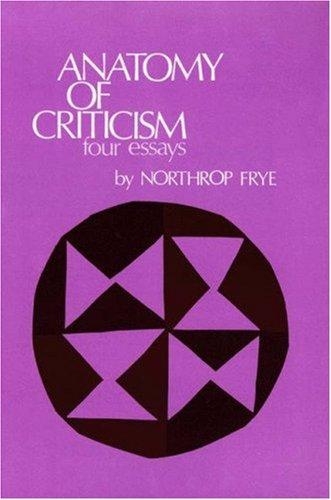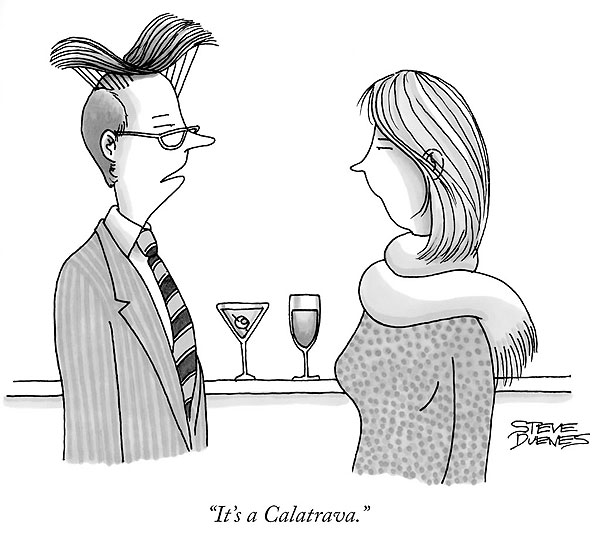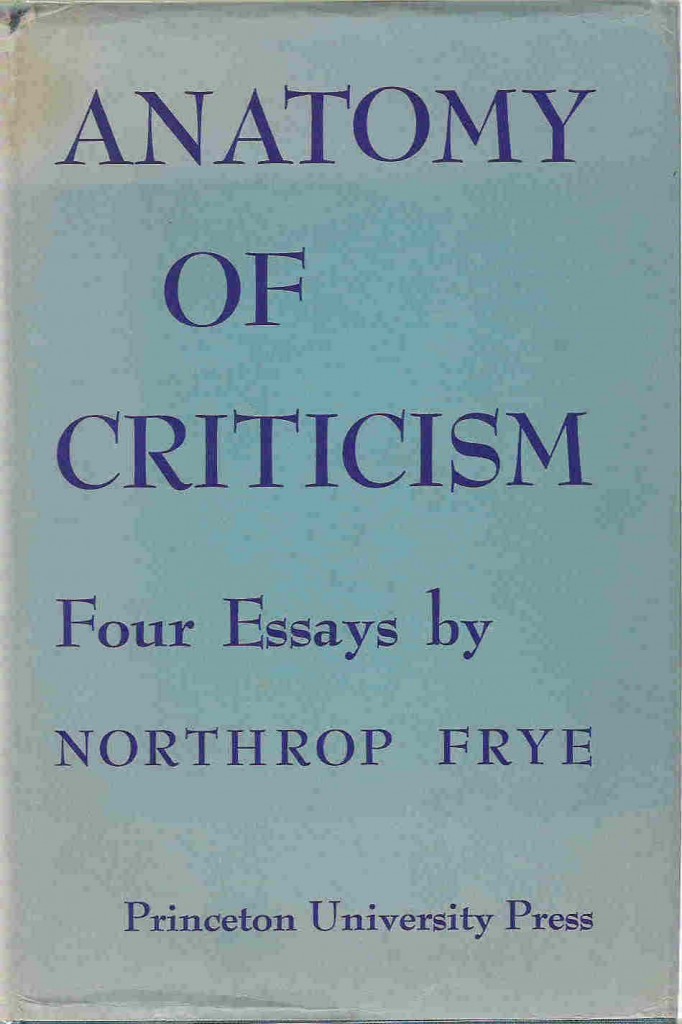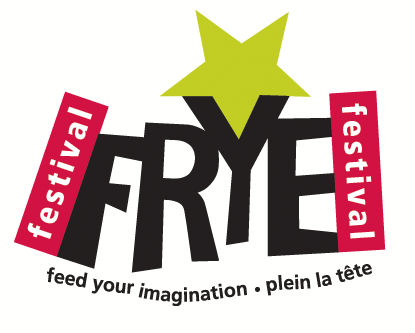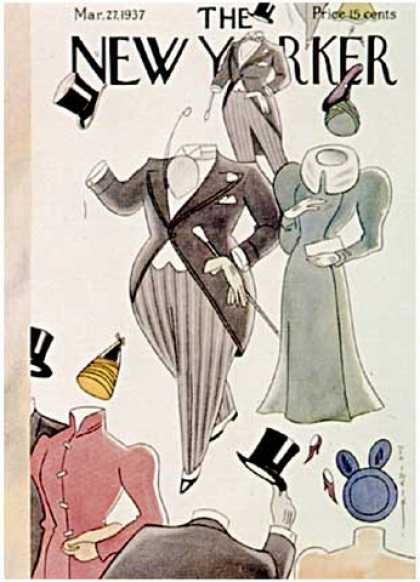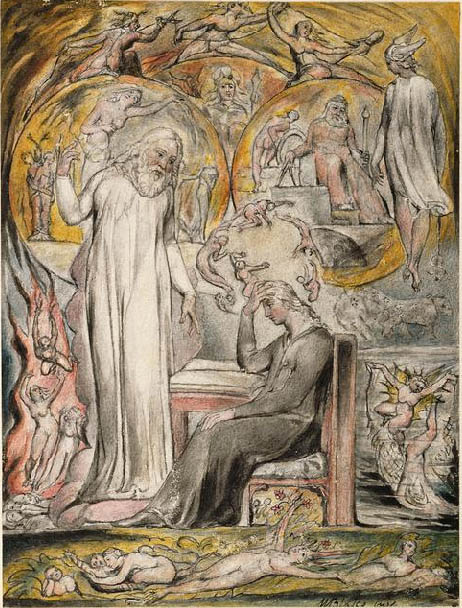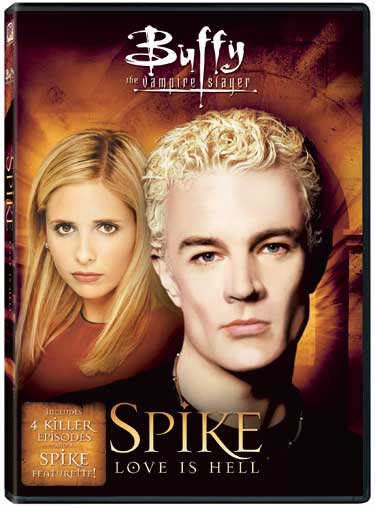It’s a commercial website, but it is offering a brief chapter by chapter summary of Anatomy at no charge.
Category Archives: Anatomy of Criticism
Frye and Popular Art Forms
Further to yesterday’s comments on “Huxley and Orwell: Two Varieties of Dystopia”
Frye was always open to what he called “naïve” artistic forms—by which he meant primitive and popular. These included cartoons. In the Anatomy he writes:
The apparatus of ‘mass media’ and ‘audiovisual aids’ plays a similar allegorical role in contemporary education. Because of this basis in spectacle, naive allegory has its centre of gravity in the pictorial arts, and is most successful as art when recognized to be a form of occasional wit, as it is in the political cartoon.” And later, in his account of the pictorial thrust of the lyric, he says, “In such emblems as Herbert’s ‘The Altar’ and ‘Easter Wings,’ where the pictorial shape of the subject is suggested in the shape of the lines of the poem, we begin to approach the pictorial boundary of the lyric. The absorption of words by pictures, corresponding to the madrigal’s absorption of words by music, is picture-writing, of the kind most familiar to us in comic strips, captioned cartoons, posters, and other emblematic forms. A further stage of absorption is represented by Hogarth’s Rake’s Progress and similar narrative sequences of pictures, in the scroll pictures of the Orient, or in the novels in woodcuts that occasionally appear.
Frye’s work is replete with references to cartoons and comic strips. The New Yorker is his favourite source of the former, and from time to time he mentions cartoonists by name: David Low, Hugh Niblock, Saul Steinberg.
Otherwise, from the Anatomy:
The earliest extant European comedy, Aristophanes’ The Acharnians, contains the miles gloriosus or military braggart who is still going strong in Chaplin’s Great Dictator; the Joxer Daly of O’Casey’s Juno and the Paycock has the same character and dramatic function as the parasites of twenty-five hundred years ago, and the audiences of vaudeville, comic strips, and television programs still laugh at the jokes that were declared to be outworn at the opening of The Frogs.
The principle of repetition as the basis of humour both in Jonson’s sense and in ours is well known to the creators of comic strips, in which a character is established as a parasite, a glutton (often confined to one dish), or a shrew, and who begins to be funny after the point has been made every day for several months.
The essential element of plot in romance is adventure, which means that romance is naturally a sequential and processional form, hence we know it better from fiction than from drama. At its most naive it is an endless form in which a central character who never develops or ages goes through one adventure after another until the author himself collapses. We see this form in comic strips, where the central characters persist for years in a state of refrigerated deathlessness.
Humour, like attack, is founded on convention. The world of humour is a rigidly stylized world in which generous Scotchmen, obedient wives, beloved mothers-in-law, and professors with presence of mind are not permitted to exist. All humour demands agreement that certain things, such as a picture of a wife beating her husband in a comic strip, are conventionally funny. To introduce a comic strip in which a husband beats his wife would distress the reader, because it would mean learning a new convention.
Moby Dick
httpv://www.youtube.com/watch?v=ryIK9TLAoAs
The finale of the film adaptation of the novel. Pardon the occasionally laughable special effects: it was 1956.
On this date in 1851 Herman Melville’s Moby Dick was first published.
Frye makes a fair number of references to the novel, but this one in Anatomy is particularly resonant because it relates the archetype to its entire mythical family and suggests what this might mean both to the reader and to the writer who engages it:
If we do not accept the archetypal or conventional element in the imagery that links one poem to another, it is impossible to get any systematic mental training out of the reading of literature alone. But if we add to our desire to know literature a desire to know how we know it, we shall find that expanding images into conventional archetypes of literature is a process that takes place unconsciously in all our reading. A symbol of the sea or heath cannot remain within Conrad or Hardy: it is bound to expand over many works into an archetypal symbol of literature as a whole. Moby Dick cannot remain in Melville’s novel: he is absorbed into our imaginative experience of leviathans and dragons of the deep from the Old Testament onward. And what is true for the reader is a fortiori true of the poet, who learns very quickly that there is no singing school for his soul except the study of the monuments of its own magnificent. (CW 22, 93)
A Note on “Northrop Frye and Critical Method”
Northrop Frye and Critical Method is now posted in the Robert D. Denham Library here
As I explain in the headnote to the Preface, Northrop Frye and Critical Method was written when I was operating in an Aristotelian mode. It focuses on Anatomy of Criticism. Almost forty years of hindsight––what Frye calls the “rear‑view mirror”––enables one to see things in somewhat different contexts. Some of these contexts I have attempted to examine in the Introduction to the Collected Works edition of the Anatomy (available in the Library here). In the early 1970s the Anatomy was from my perspective the central book by Frye that needed to be accounted for. Numerous books and essays, of course, followed in its wake, and the considerable body of writing Frye did in the last decade of his life has a decidedly different emphasis from what he wrote thirty years earlier. I have tried to account for this emphasis in Northrop Frye: Religious Visionary and Architect of the Spiritual World. Still, the Anatomy catapulted Frye from being a recognized authority among the small circle of Blake scholars to someone with an international presence. And most of what continues to be written about takes its cues from the Anatomy. If Northrop Frye and Critical Method helps to illuminate what that book was all about, I will naturally be most pleased.
I express my deepest thanks to Jonathan Cox, whom I had the good fortune of teaching and learning from in the undergraduate classroom, for his devoted labor in formatting the electronic text. Thanks are also due to Michael Happy, the indefatigable webmaster of “The Educated Imagination,” which has its first birthday celebration today, for suggesting that the book, long out of print, be made available to a wider audience, and to the Pennsylvania State University Press, for releasing the copyright back to me.
Quote of the Day: Censorship
Bob Denham: “Pity the Northrop Frye Scholar”? Anatomy of Criticism Fifty Years After
Bob Denham’s talk to the Frye Festival in April 2007 has been added to the Festival Archive in the journal. It can be linked directly here.
A sample:
In his foreword to the reissue of the Anatomy in 2000 Harold Bloom remarks that he is “not so fond of the Anatomy now” as he was when he reviewed it forty‑three years earlier (vii). Bloom’s ambivalence springs from his conviction that there is no place in Frye’s myth of concern for a theory of the anxiety of influence, Frye’s view of influence being a matter of “temperament and circumstances” (vii) Bloom’s foreword, however, is devoted chiefly, not to the Anatomy, but to his own anxieties about Frye’s influence, presented in the context of his well-known disquiet about what he calls the School of Resentment––the various forms of “cultural criticism” that take their cues from identity politics. In the 1950s, Bloom says, Frye provided an alternative to the New Criticism, especially Eliot’s High Church variety, but today he is powerless to free us from the critical wilderness. Because Frye saw literature as a “benignly cooperative enterprise,” he is of little help with its agonistic traditions. His schematisms will fall away: what will remain is the rhapsodic quality of his criticism. In the extraordinary proliferation of texts today, according to Bloom, Frye will provide “little comfort and assistance”: if he is to afford any sustenance, it will be outside the universities. Still, Bloom believes that Frye’s criticism will survive not because of the system outlined in the Anatomy, but “because it is serious, spiritual, and comprehensive” (xi).
Frye on the New Yorker
For the article that Michael Happy surely intends to write about Frye’s love affair with The New Yorker, here are the references—at least most of them—plus a few from Helen.
I have been rather handicapped by the lack of money, but that doesn’t matter so much this first term. But if you really want to do something for me, my own self‑sacrificing little girl—WHEN THE HELL ARE YOU GOING TO COME THROUGH WITH SOME NEW YORKERS? (Frye‑Kemp Correspondence, CW, 2, 620-1)
To switch the subject to civilization for the moment. Thank you very very much for the New Yorkers. You are a sweet little girl. It was just pure nerves that made me bark for them in my last letter [above]. The idea that you might have forgotten to buy them owing to pressure of work or something nearly made me collapse. I spent a marvellous weekend with them. It was just as well they came when they did, as the boots took my shoes Saturday morning to repair them and didn’t return them till Sunday morning—I had to go to Hall in my tennis shoes. (ibid., 630)
The poet may change his mind or mood; he may have intended one thing and done another, and then rationalized what he did. (A cartoon in a New Yorker of some years back hit off this last problem beautifully: it depicted a sculptor gazing at a statue he had just made and remarking to a friend: “Yes, the head is too large. When I put it in exhibition I shall call it ‘The Woman with the Large Head.’”) (Anatomy of Criticism, 87)
The dandy attitude survives in the early (twenties) essays of Aldous Huxley, whose epigrams are mainly inverted clichés, in Yeats’ association of dandyism & heroism, in Lytton Strachey, & in the contemporary New Yorker—see its Knickerbocker figure and again the inverted melodrama clichés of its cartoons. (Notebooks for Anatomy of Criticism, CW 23, 265)
Many years ago Edmund Wilson, in a New Yorker review, connected the Houdini situation with the dying & reviving god. [“And the magician who escapes from the box: what is he but Adonis and Attis and all the rest of the corn gods that are buried and rise? This is quite plain in the case of Houdini” (Classics and Commercials: A Literary Chronicle of the Forties (New York: Farrar, Straus, 1950), 151. Wilson’s review appeared in New Yorker, 11 March 1944.] (ibid., 294)
As I see it now, there are two main themes: the relation of literature to the other arts & disciplines, and the relation of the hypothetical to the existential: i.e., art & religion. I call it Tentative Conclusion, & begin, possibly, with the New Yorker cartoon. [The “head is too large” cartoon, referred to above]. (ibid., 202)
Don’t assume that the intentional fallacy is always a fallacy, i.e. that you can judge a satire without taking account of a humorous or ironic intention. The answer “but it’s supposed to be that way” is valid for many objections—cf. the New Yorker “large head” problem. [The “head is too large” cartoon, referred to above]. (ibid., 237)
Frye, Pierce, Eco, and “Abduction”
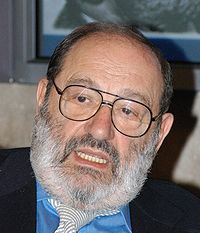
Umberto Eco
Thanks, Nicholas, for your post: this helps to clarify the connection you are making between Lonergan and Frye. I like the detective novel analogy very much: it is perhaps a useful analogy for Frye’s own process of judgment and insight.
Criticism is the act of making ourselves conscious of what is going on unconsciously when we read, and uncovering the imaginative unconscious of literature requires, to recur to another recent thread, what Frye meant by science: a combination of empirical study and deduction–and, I believe even more importantly, what the American philosopher Charles Sanders Pierce called abduction, a species of logic close to inspired hunch or guessing. I take the liberty of quoting from the wikipedia’s definition of the word:
Abduction is a method of logical inference introduced by Charles Sanders Peirce which comes prior to induction and deduction for which the colloquial name is to have a ‘hunch.’ Abductive reasoning starts when an inquirer considers of a set of seemingly unrelated facts, armed with an intuition that they are somehow connected. The term abduction is commonly presumed to mean the same thing as hypothesis; however, an abduction is actually the process of inference that produces a hypothesis as its end result. It is used in both philosophy and computing.
(Perhaps Clayton Chrusch will have something to say about abduction and computing.)
Abduction is also used by the great detectives of literature, like Auguste Dupin and Sherlock Holmes, and in another sense Frye was the greatest detective of literature, putting together the pieces of the great literary whodunit by a series of lesser, greater, and ultimately crowning acts of abduction. His great epiphanies, about which much as been said already on the blog (see in particular Bob Denham’s post), are in fact moments of startling abductive inference, in which a myriad of previous insights suddenly cohere into a radiant whole.
I have often wondered why semioticians, and for that matter the cognitivists (with the important exception of our erstwhile blogger Michael Sinding), have ignored Frye’s work. To repeat some observations I published years ago in an article on Frye and semiotics, Frye actually produced what semioticians like Umberto Eco merely postulated as possible: a coherent and detailed description of the encyclopedia of literary conventions and genres. Frye’s conclusions are in no way different from those laid out by Eco when he speaks of Barthes‘ sense of the code in S/Z as
the whole of the encyclopedic competence as the storage of that which is already known and already organized by a culture. It is the encyclopedia, and at the same time allows, gives the possibility of inventing beyond itself, by finding new paths, new combinations within the network.
Frye would also be in complete agreement with Eco’s statement that “A code is not only a rule which closes but also a rule which opens. It not only says ‘you must’ but says also ‘you may’ or ‘it would also be possible to do that.'” Indeed, invention in literature would not be possible without the existence of conventions and rules, which should be seen as enabling, not constricting innovation and originality.
More Frye and the Bible
Blake’s Plato
Reponding to Nicholas Graham’s post
I certainly agree that Frye’s reading of the Bible is guided by typology and that there is a certain prophetic power in his biblical criticism. I was by no means trying to give a full account of Frye’s reading of the Bible. My remarks were in the context of the earlier posts about the meaning of the phrase “literary criticism of the Bible.” All I was trying to suggest was that Frye’s approach relies on two fundamental literary principles, myth and metaphor or narrative and image––the mythos and dianoia that Frye devoted so much space to in Anatomy of Criticism. Typology and prophecy, as I understand those terms, are terms from biblical, rather than literary, criticism. I agree also that “vision” is also absolutely central to Frye’s enterprise, and I wrote a fairly long chapter in my book on Frye and religion (89–125) trying to make a case for its centrality and relating it to terms such as “insight,” “enlightenment,” “epiphany,” “recognition” and (the central visionary faculty) “the imagination.” But again “vision” is a term that does not spring from the vocabulary of literary criticism, though it is perhaps obliquely connected to Aristotle’s opsis. No one would want to reduce Frye’s reading of the Bible to myth and metaphor. But they are literary principles, and so no one would want to ignore them either. As I understand Frye, “vision” and “prophecy” belong to what I called the Bible’s centrifugal, kerygmatic thrust.
The Demonic and Desire
Responding to Michael Happy’s post
I am glad you posted on demonic modulation, Michael, because I think demonic parody is integral to Frye’s conception of Romance, which itself seems integral to his view of literature in relation to primary concerns.
It may be useful to consider demonic modulation in terms the Anatomy’s description of demonic imagery and parody. The apocalyptic world, Frye writes, “present, in the first place, the categories of reality in the forms of human desire, as indicated by the forms they assume under the work of human civilization.” Demonic imagery embodies what desire rejects, and “one of the central themes of demonic imagery is parody, the mocking of the exuberant play of art by suggesting its imitation in terms of ‘real life.’”. In The Secular Scripture he points out that, as the conventions of myth and Romance become gradually displaced into “realist” modes, there is also a parallel gradation of parody serving to assimilate those conventions.
This might provide for an alliance between demonic modulation, which relates to the inversion of customary associations, and the Promethean Furnace in Words with Power. “The world of titans,” Frye writes, “has usually been regarded as simply evil, and the word ‘demonic’ is normally used… to mean a death-centered parody of human life.” (pg. 276). However, “Prometheus is the patron of the attitude, which has sporadically appeared in literature ever since Lucretius, of ignoring the gods on the ground that even if they exist they can only be alien beings unconcerned with human life.” (pg. 277). In this modulation, what would customarily be associated with the demonic is in fact an affirmation of life through desire, over a world that more closely resembles our own.
That is to say that there comes a point when what is displaced in the text, because it is repressed by the ascendant moral values it flaunts, becomes in fact a life affirming principle. Prometheus becomes Christ-like, the demonic becomes apocalyptic. This may inform the simple and more humane Robin Hood motifs that run through Literature, and our experience, from Huckleberry Finn protecting Jim from the slave “masters”, to what makes it obscene for certain ideologies to speak against aid for suffering countries. And it is why, for example, the homophobic (and perhaps homicidal) work of Christian evangelicals in Uganda has been so repellent a parody of the Christian exhortation to good works.
